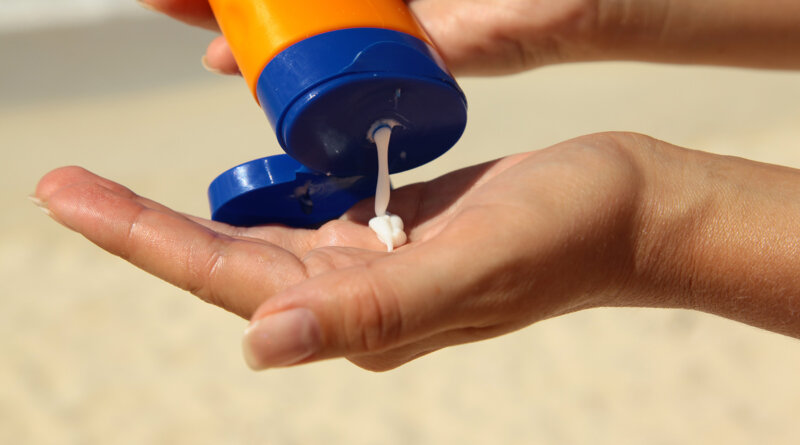Consumer Reports Ranks Top Sunscreens for 2020
May 22, 2020 — Chemical sunscreens offer the best protection and beat out those with mineral or natural ingredients such as titanium dioxide and zinc oxide, a new review from Consumer Reports finds.
In this year’s annual ”Best Sunscreens” list, experts rated 53 products in several categories. In addition to looking at chemical vs. mineral sunscreens, the report also provided a separate ranking for chemical sunscreens without oxybenzone.
In a 2016 study, scientists concluded that sunscreen with oxybenzone that washes off swimmers is threatening the health of coral reefs. The American Academy of Pediatrics recommends avoiding sunscreen with oxybenzone for children due to concerns about mild hormonal properties.
As in past years, Consumer Reports buys products off the shelf. They test three samples, preferably with different lot numbers, for each of the three. They send the products to a lab to test for SPF and ultraviolet A (UVA) protection.
SPF, or sun protection factor, measures a sunscreen’s ability to protect against sunburn, mostly the result of UVB ray exposure. Testers apply a standard amount of each sunscreen in a 2-inch by 3-inch rectangle on the backs of the panelists who test the products. They soak in a tub of water, then get exposed to UV light from a sun simulator. A day later, testers check their skin for redness and give a rating.
To test for UVA, Consumer Reports uses a test similar to the one required by the FDA for sunscreen makers who want to label their products “broad-spectrum.”
Five products received Consumer Reports’s “Recommended” rating.
Recommended Products
The 5 recommended products include three lotions and two sprays. As in the past, all are chemical sunscreens, and the five picks all have oxybenzone. “While we recognize there are concerns with oxybenzone, we know that sunscreen is a critical part of an overall sun protection plan,” says Don Huber, director of product safety, in the report. “It’s proven to prevent sunburn, and it can lower your risk of skin cancer and reduce skin aging, and our testing is based on a product’s ability to filter UV rays.”
- Coppertone Ultra Guard Lotion SPF 70, $8
- CVS Health Ultra Protection Sun Lotion SPF 70, $9
- Solimo (Amazon) General Protection Lotion SPF 50, $6
- Trader Joe’s Spray SPF 50+, $6
- Neutrogena Beach Defense Water + Sun Protection Spray SPF 70, $13
For people with concerns about oxybenzone, eight chemical sunscreens without it received “Very Good” overall scores. Among them:
- Hawaiian Tropic Sheer Touch Ultra Radiance Lotion SPF 50, $8
- Hawaiian Tropic Island Sport Ultra Light Spray SPF 30, $12
The magazine also provided ratings for products that only use mineral blockers titanium dioxide and zinc oxide, although it warns they do not provide as good of protection as chemical sunscreens. “Year after year in our tests, the sunscreens that contain only one or both of these as active ingredients do not perform as well as the ones that contain chemical active ingredients,” the report says. “Some provide adequate SPF protection but not enough UVA protection, or vice versa.”
Top mineral products include:
- California Kids #supersensitive Tinted Lotion SPF 30+, $24
- Badger Active Natural Mineral Cream SPF 30 Unscented, $14
More About Oxybenzone
The FDA asked sunscreen makers in February 2019 to provide additional safety data on 12 common chemical active ingredients in sunscreen, including avobenzone, homosalate, octinoxate, octisalate, octocrylene, and oxybenzone, among others.
The agency asked for this information because research has shown that the chemicals can soak into the skin and the bloodstream. The study showed it can happen after one application and that the chemicals can remain in the body for an extended period of time. The FDA says that the request does not mean the ingredients are not safe — they are trying to understand the long-term effect of absorption and what levels can be considered safe, the FDA’s David Strauss, MD, PhD, told Consumer Reports.
Michael Dannenberg, MD, chair of dermatology at Northwell Health’s Huntington Hospital in Huntington, NY, gets questions from his patients about oxybenzone sunscreens. He tells them that just because the ingredient could be measured in the blood ”doesn’t mean it’s a lot, it just means a measurable amount.”
“People are concerned because the FDA says they are reviewing [the ingredients], but as I tell my patients, ‘That’s the FDA’s job, they are supposed to do that.”’ As for the environmental effects, he says the evidence that oxybenzone harms coral reef is ”still scant.” Hawaii and Key West, FL, have banned products with the chemical.
“The chemical sunscreens are probably getting more of a bad rap than they deserve,” he says. “And with mineral sunscreens, there is a limit to how high you can get the SPF before you look like paste.”
A new report from the Environmental Working Group recommends consumers avoid sunscreens with oxybenzone because of a lack of safety data.
When it comes to choosing sunscreen, Dannenberg advises selecting a product with at least an SPF of 30 and something that says broad spectrum, meaning it does block UVA as well.
Most people use too little sunscreen, he says. “You should use 1 ounce of sunscreen over your entire body.” And it’s important to reapply at least every 2-4 hours or after swimming or sweating, according to Dannenberg and Consumer Reports.



